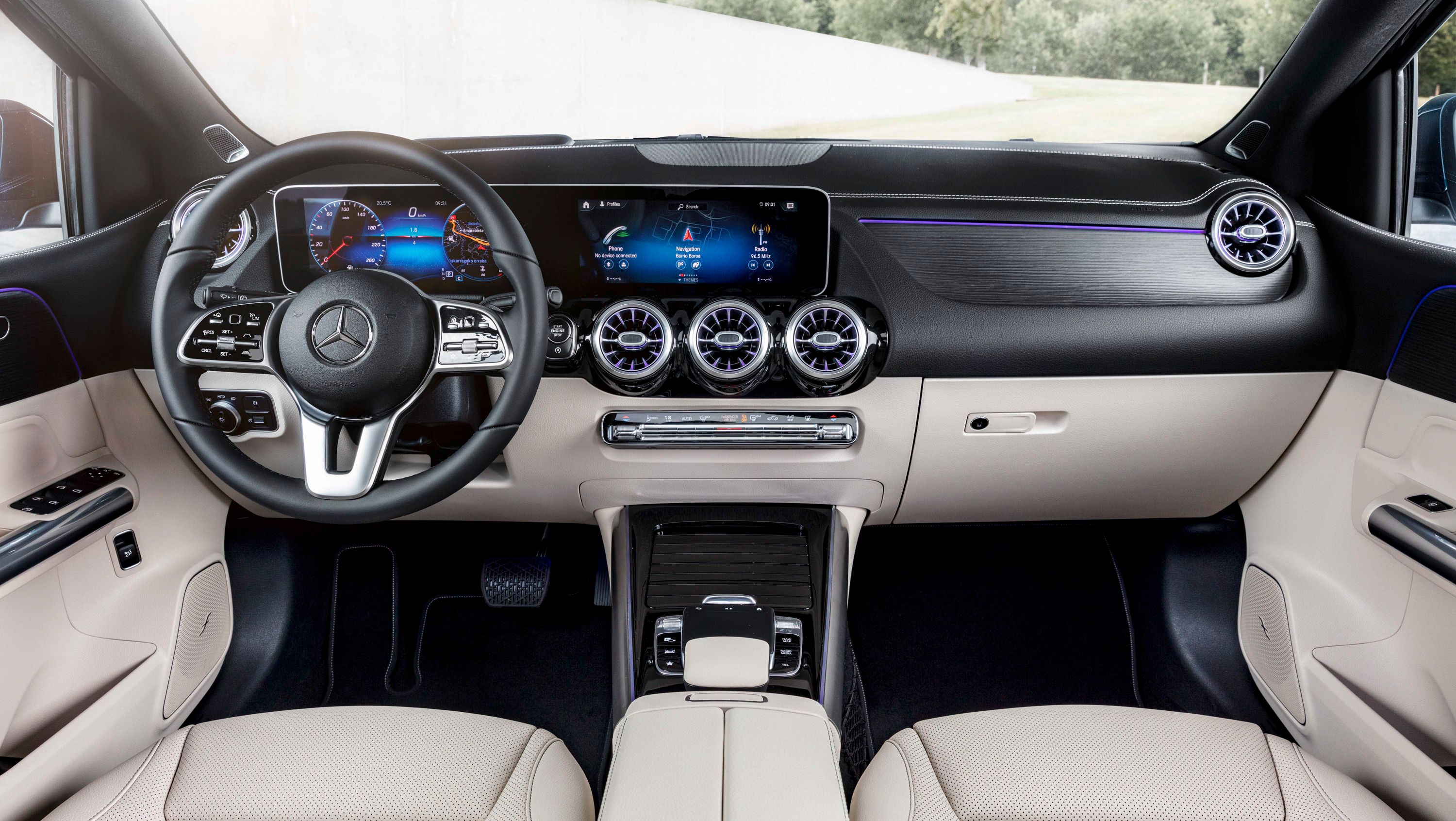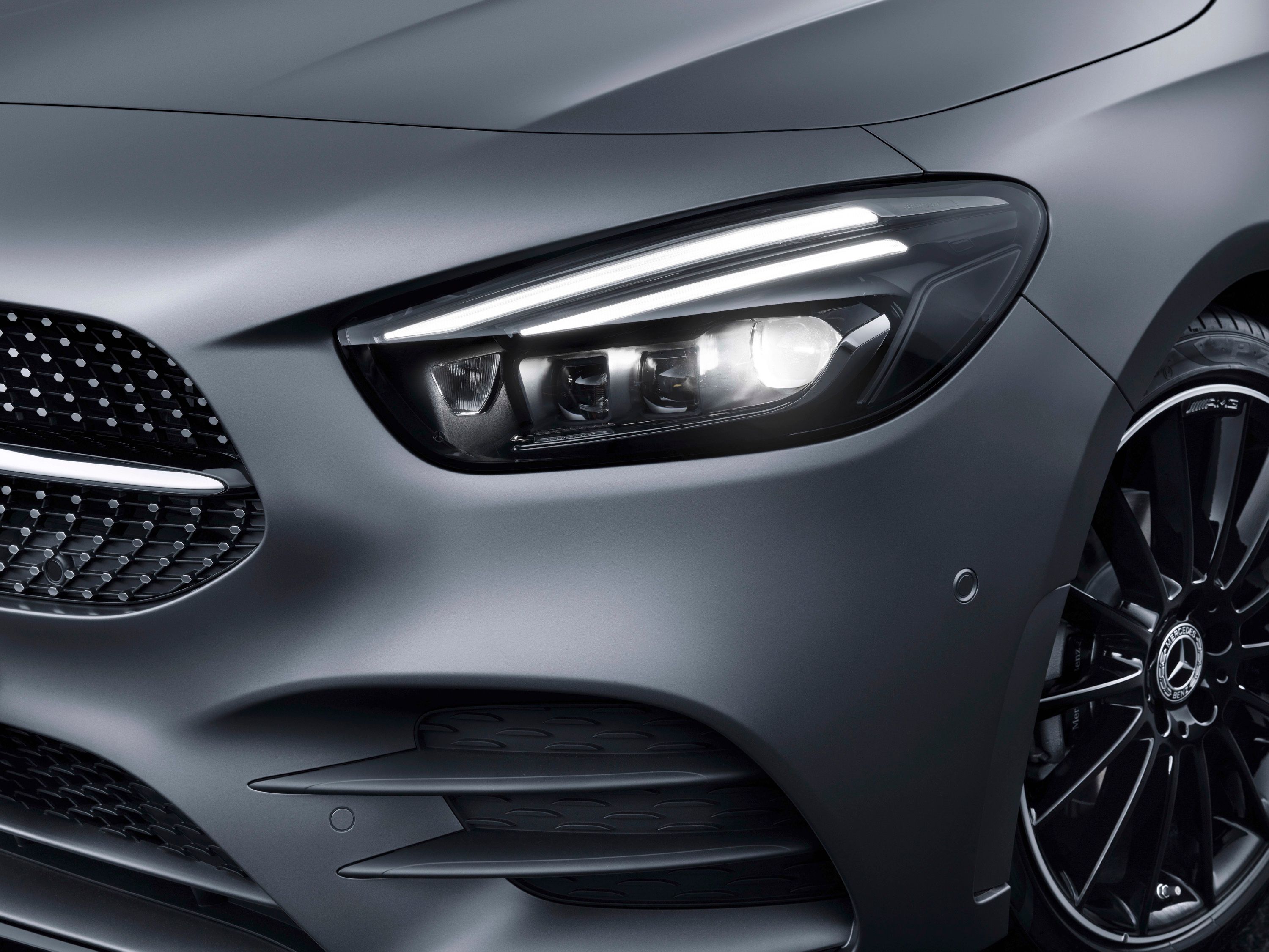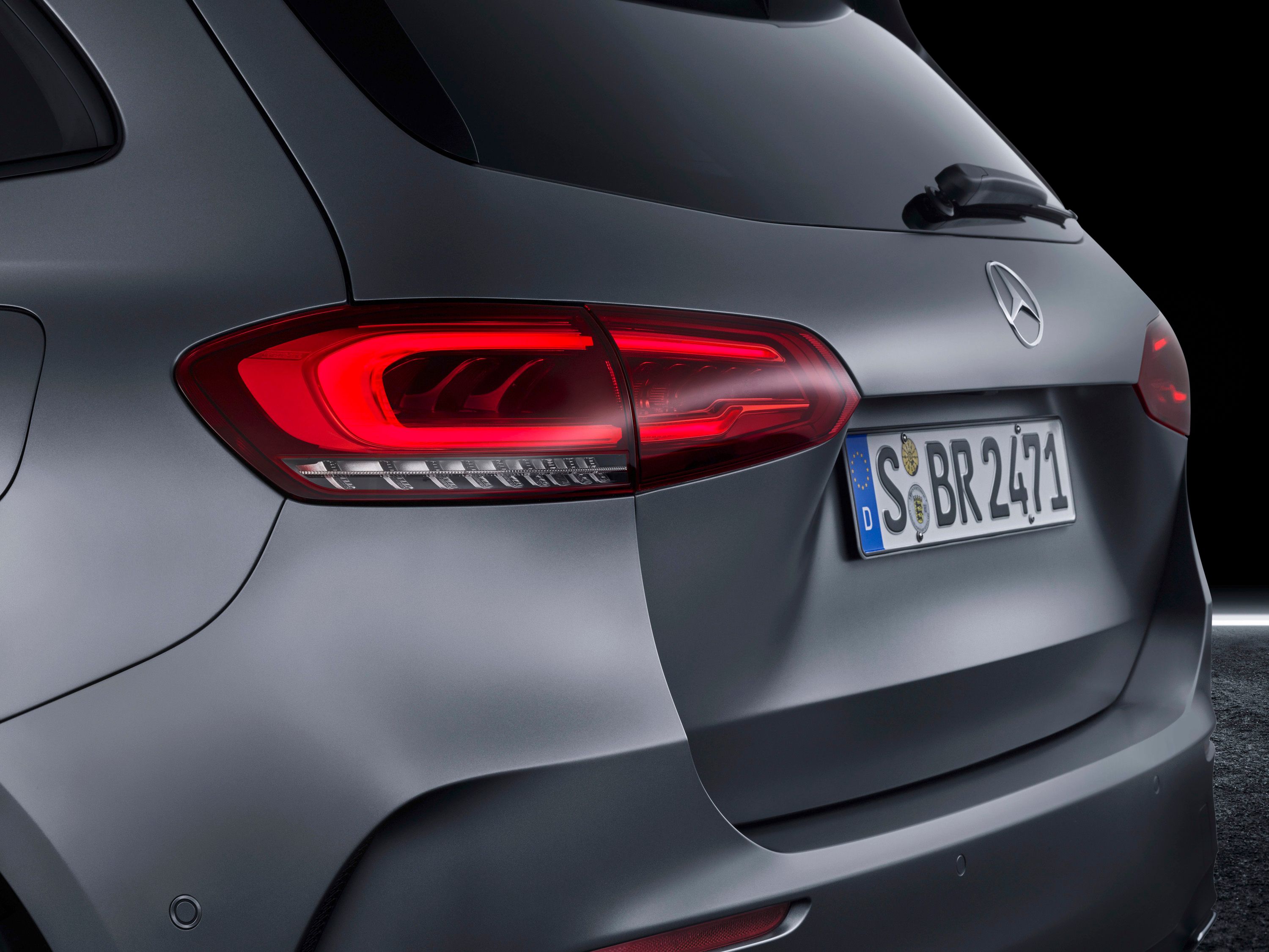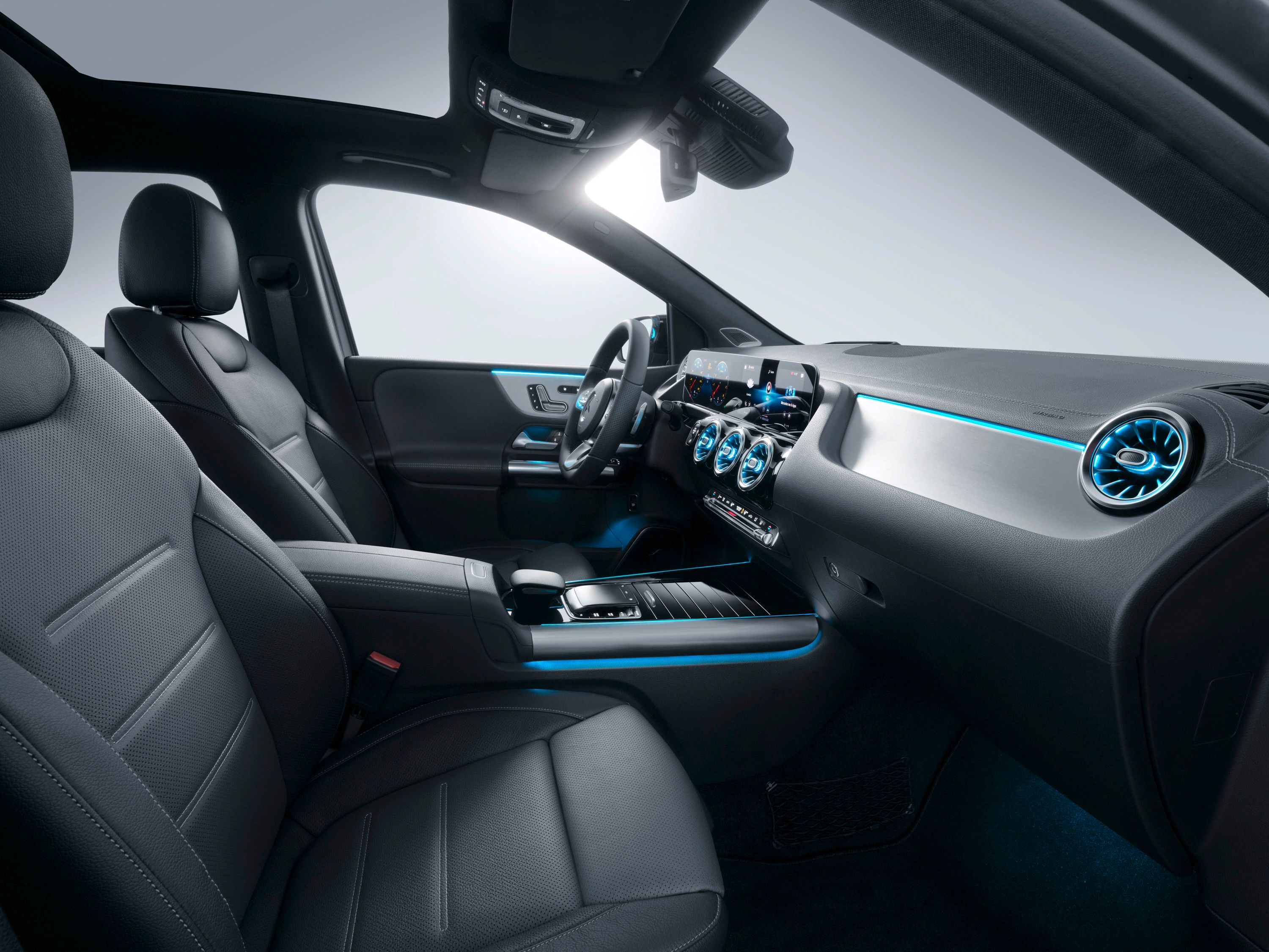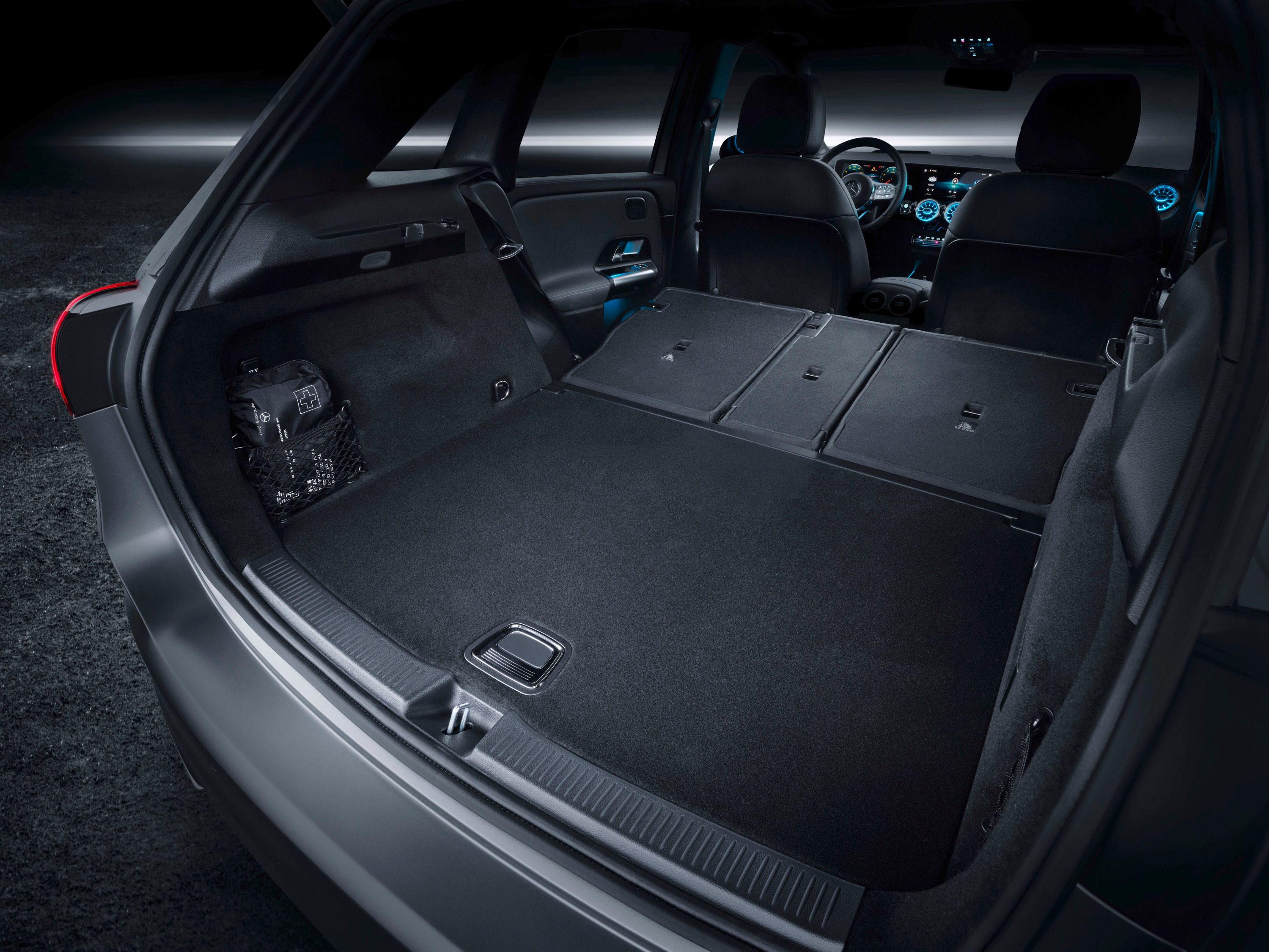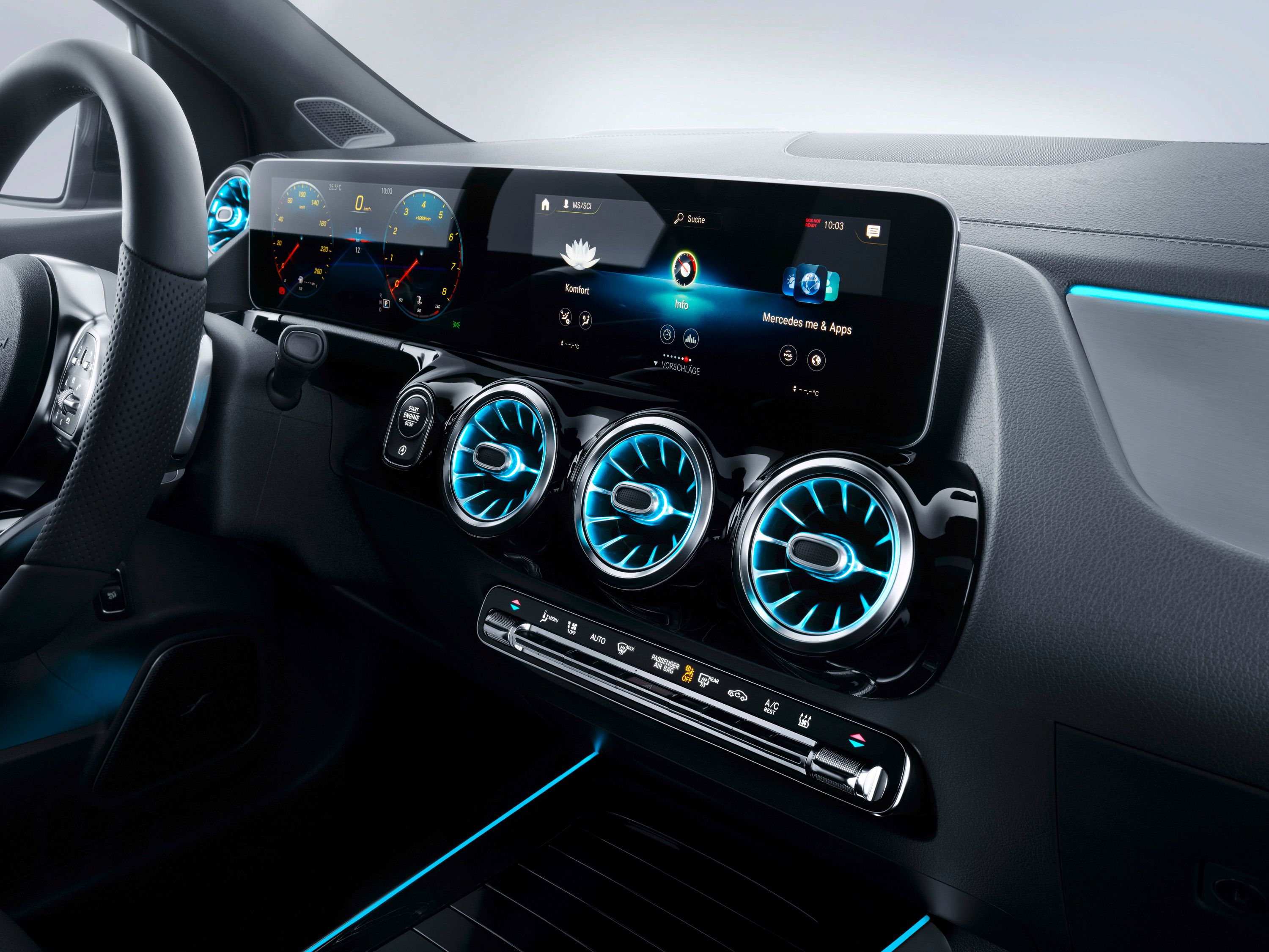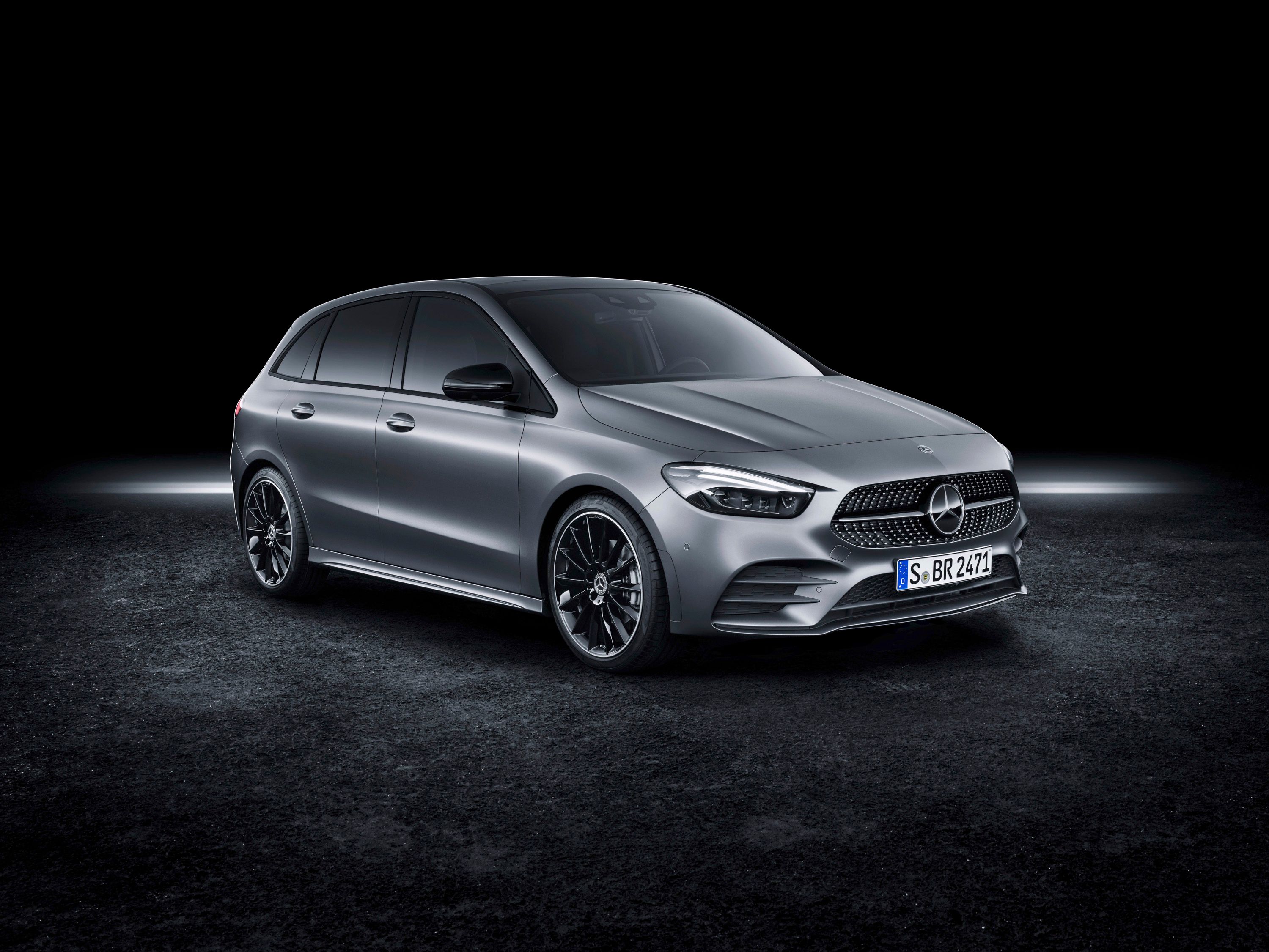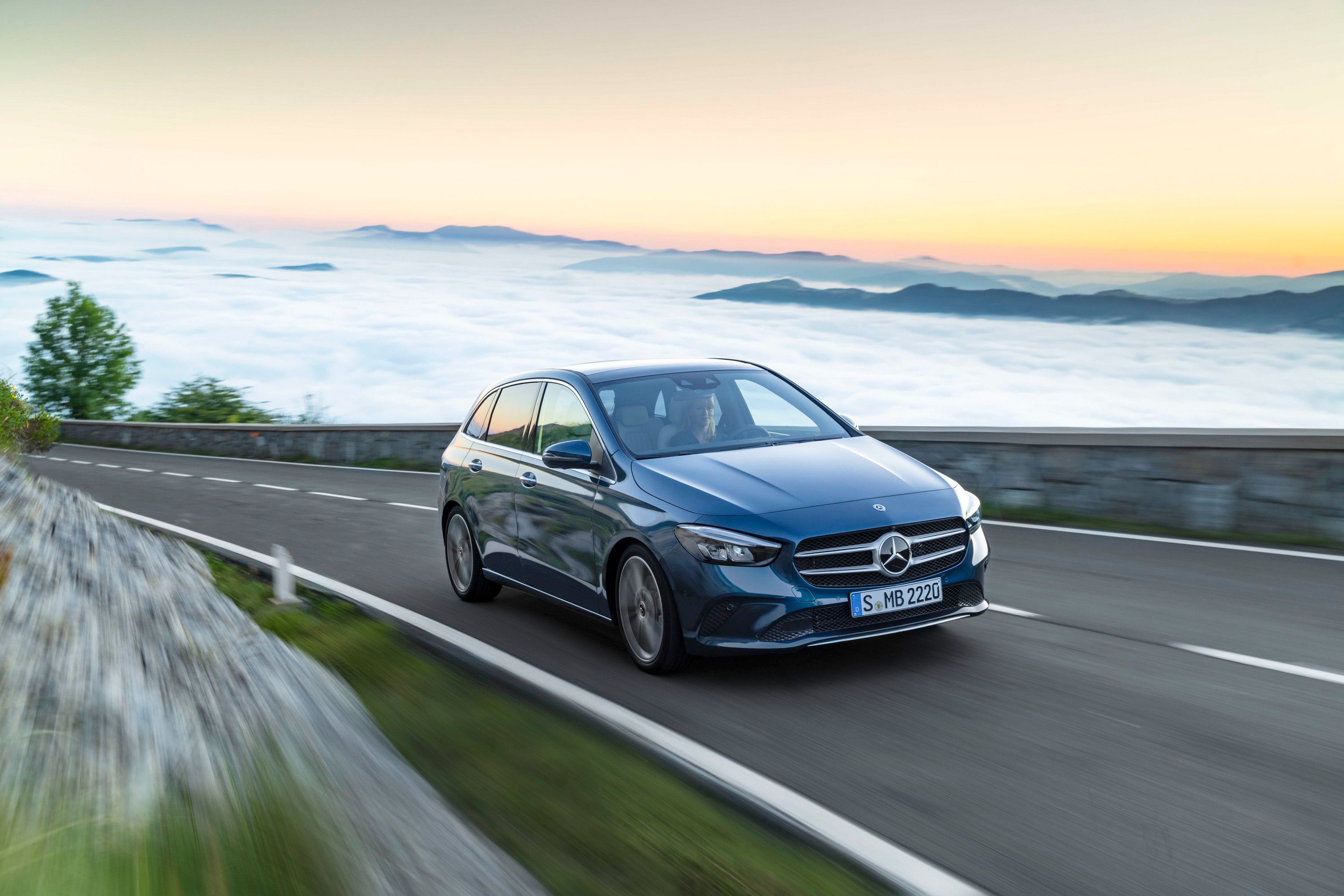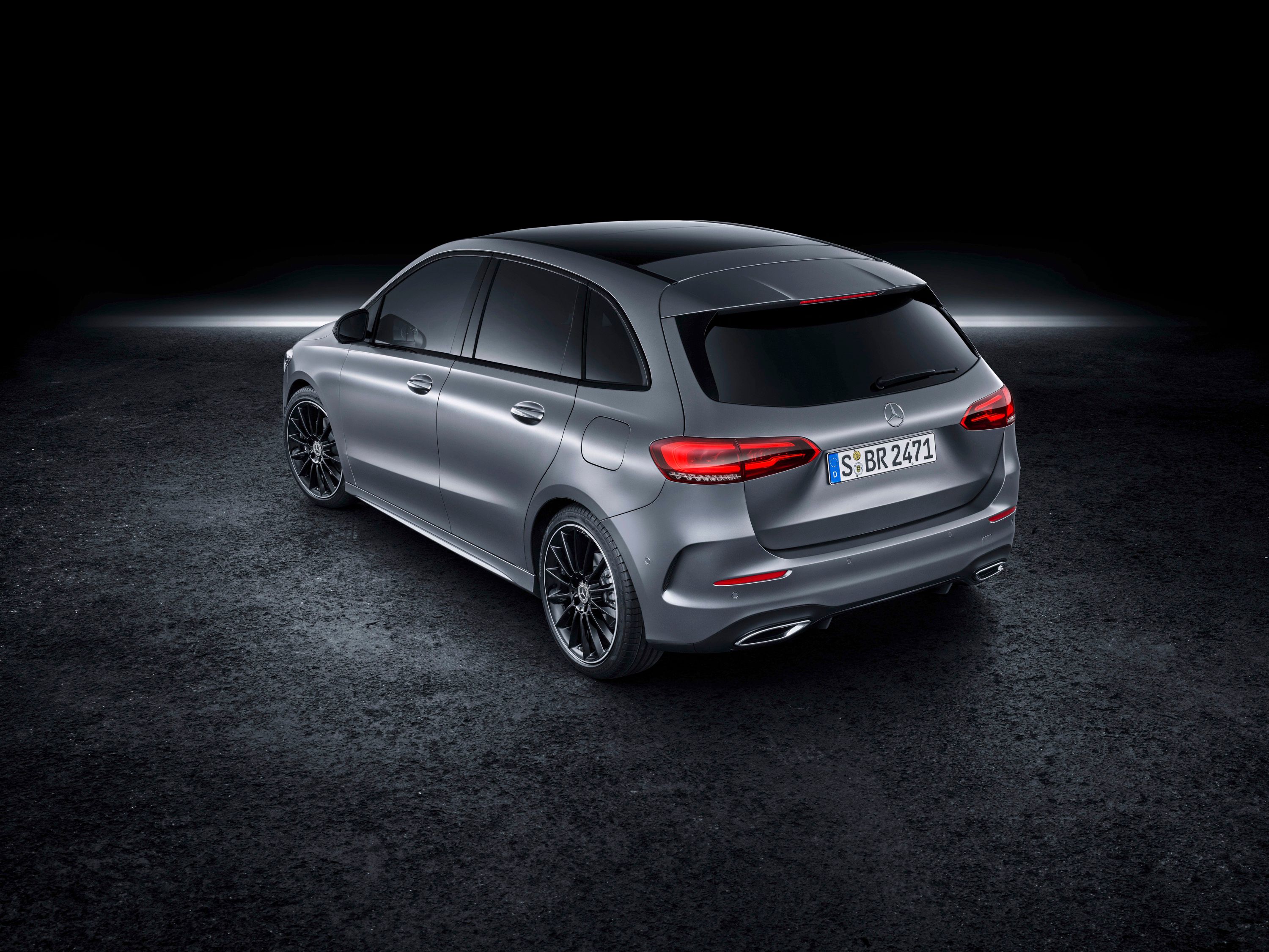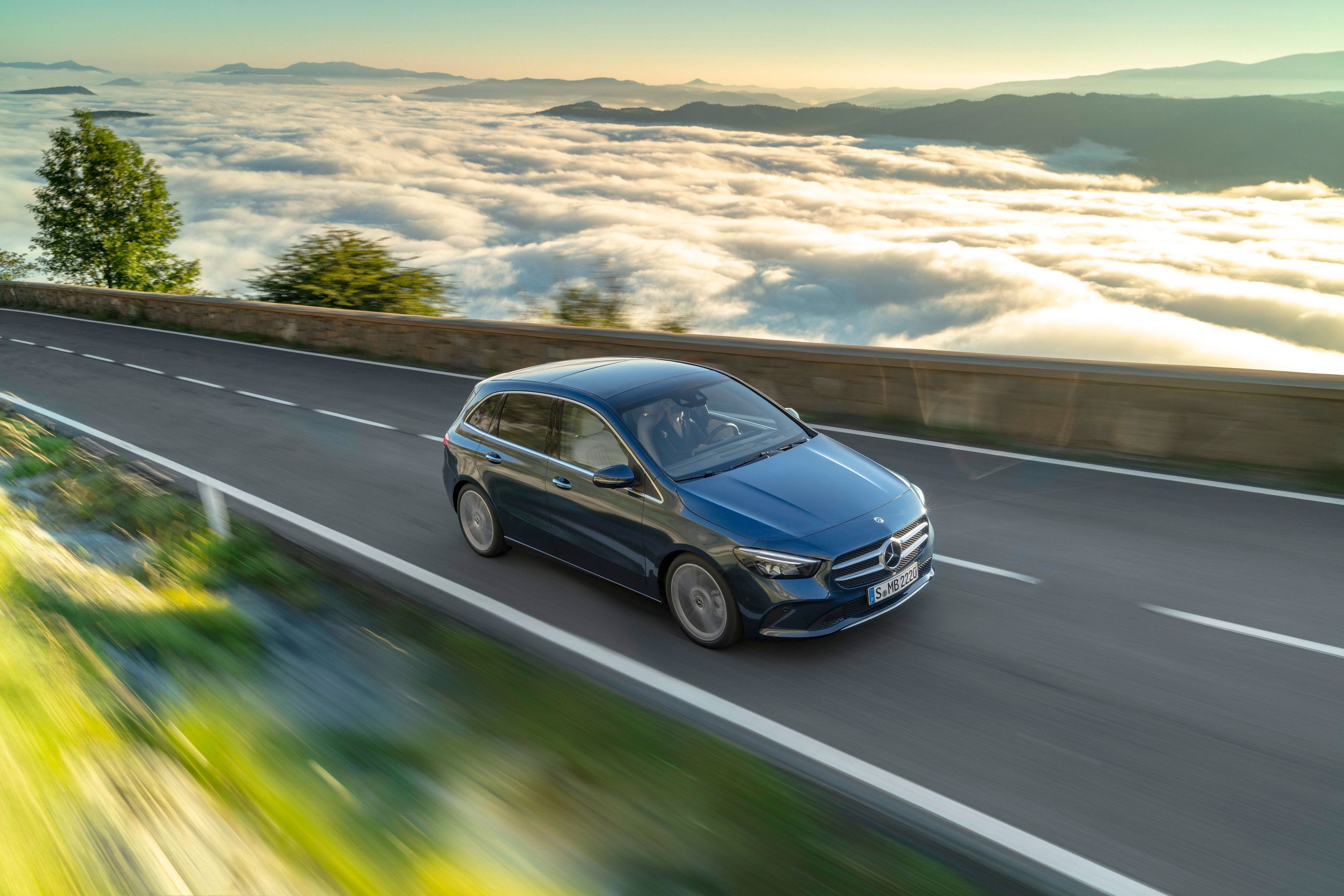Mercedes-Benz is in the process of replacing almost all of its current-generation vehicles, including the compact cars. It's been only a few months since the German firm unveiled the new-gen A-Class, and we saw the slightly bigger B-Class make its global debut at the 2018 Paris Motor Show.
Restyled to look sportier on the outside and more upscale on the inside, the new B-Class also shares lots of technology with bigger sedans such as the E-Class and S-Class. How does it compare to the outgoing model?
Exterior
Front
|
|
ids=801952,801951 |
no_overlay=true> |
The bumper had different layouts depending on trim, with the sportier AMG Line featuring larger vents. However, because of the V-shaped design of the bumper and the fact that the engine hood ascends rather dramatically toward the windshield, the old B-Class has a rather utilitarian, minivan-inspired look.
By contrast, the new B-Class moves away from the MPV design. Sure, it's still based on the A-Class, but the hatchback is now much more aggressive and this lends plenty of sportiness to the B-Class. Not only the grille is wider, but it also has a new design with narrow upper and lower sections and a wider center. Mercedes kept the horizontal slats on each side of the emblems, but revised them for a more modern look.
The new engine hood is arguably the detail that makes the biggest difference when compared to the old model. Because it's almost flat now, it no longer makes the B-Class look like a mini MPV. Instead, it's just a slightly boxier hatchback, which is a cool departure from the old design.
Needless to say, the B-Class now appeals to a bigger audience design-wise.
Side
|
|
ids=801953,801954 |
no_overlay=true> |
Moving onto the sides, the old B-Class looks surprisingly fresh given its age. The MPV had a few cool features integrated into its profile, including the curved character line that runs above the side sills and then moves up to pass above the rear wheel arch. This feature is gone from the new car, which employs much simpler lines.
Also, because the headlamps and taillights, which extend well into the fenders, are slimmer, the B-Class no longer feels like some sort of mini SUV. Overall, these changes also make it seem as if the revised MPV is a tad longer and lower.
Rear
|
|
ids=801957,801958 |
no_overlay=true> |
This is where the two generations are significantly different. We can notice big changes starting with the tailgate.
Of course, it's the taillights that get a lot attention, as they're very slender on the new model. They still employ a two-element design with half on the fender and half of the tailgate, but they're much smaller and thinner now. The old B-Class had big taillights that reminded me of the company's big SUVs. The reverse lights were also moved to the bottom from the center position on the old car.
The new shape of the lights enabled Mercedes to make critical changes to the design. For starters, the license plate recess is now bigger and wider toward the bottom. The line at the top acts like a bridge between the taillights. The old B-Class had a chrome strip here, but its absence gives the new MPV a cleaner and more upscale look.
Interior
|
|
ids=798019,801959 |
no_overlay=true> |
The old B-Class boasts A-Class details all over the place, starting with the three, round A/C vents on the center stack and the control cluster below. The organic design of the dashboard also came from the A-Class, as did the door panels. Needless to say, despite being seven years old as of 2018, the old B-Class still looks appealing inside the cabin save for a few details like the cluttered center stack and the cheap-looking plastic surfaces.
The new B-Class fixes that thankfully.
The center stack is much cleaner now, with only a handful of controls placed in a thin console just under the central A/C vents. Of course, this is because most controls are now accessible through the infotainment display and the instrument cluster. All surfaces look much better now, including in the base model, which no longer feels cheap. The door panels are more ergonomic too and offer a bit more space in their pockets.
Opt for a more expensive trim or pick out some of the expensive options and the B-Class becomes just as fancy as the bigger Mercs. Unlike in the old model, you'll no longer feel like your driving an entry-level Mercedes-Benz and feel the need to upgrade to the C-Class or E-Class for that premium experience.
As far as utility goes, the new B-Class is more practical. The old MPV was already a bit more spacious than its direct rival, the BMW 2 Series Active Tourer, at 488 liters with the rear seats up, but the new car can haul a lot more. Thanks to the ability to move the rear seats by 14 cm, capacity can now vary between 455 to 705 liters.
Technology
Bluetooth connection is standard for both phone and audio functions, and there's two USB sockets and an SD card reader. The COMAND Online infotainment in the eight-inch unit includes a wifi hotspot and you can get the Mercedes Connect Me, which allows you to control some of the car’s functions via a smartphone app. The options list is rounded out by features like a 12-color ambient lighting system, and keyless entry and start.
On the safety front, the previous B-Class comes with a wide range of life-saving tech. On top of the usual airbags for front and rear passengers, it has features like Attention Assist, Collision Prevention Assist Plus, and an emergency call system. Options include active cruise control, blind spot monitor, and lane-keeping assist. EuroNCAP gave the B-Class a five-star rating for crash safety with a 97 percent score for adult occupant protection.
Unlike its predecessor, the third-gen B-Class is able to drive semi-autonomously in certain situations. Fitted with a camera and radar system that anticipates trafic up to 500 meters ahead, it uses map and navigation data to adjust speed, change lanes, or bring the vehicle to a complete stop.
Passive safety features three-point seatbelts with belt tensioners and belt force limitation, airbags for the driver and front passenger, kneebag for the driver, windowbags, and sidebags. Optionally, you can buy rear sidebags.
Drivetrain and Performance
Mercedes offered the second-generation B-Class with a big roster of gasoline and diesel engines. On the gasoline front, a 1.6-liter four-cylinder powered the entry-level B180 and B200 models. The first one generated 120 horsepower and 148 pound-feet, while the second one came with 154 horses and 184 pound-feet.
The remaining B200, B220, and B250 all had a 2.0-liter four-banger under the hood. While the B200 arrived with 181 horsepower and 221 pound-feet, the range-topping B250 delivered a more exciting 208 horses and 258 pound-feet of twist.
Mercedes also offered a natural gas version of the B200 with 154 horsepower and 199 pound-feet.
The diesel range began with the tiny 1.5-liter four-cylinder that Mercedes borrows from the Nissan-Renault alliance. A base version rated at 89 horsepower and 162 pound-feet powered by B160 CDI, while a more powerful unit with 108 horses and 192 pound-feet motivated the B180 CDI. The B200 CDI featured a 1.8-liter four-pot rated at 134 horsepower and 221 pound-feet. Finally, the B220 CDI version packed the 2.1-liter diesel with 168 horsepower and 258 pound-feet of torque.
The previous B-Class had an all-electric version too. Called Electric Drive, it featured an AC induction motor with an output of 177 horsepower and 251 pound-feet. This version was the only B-Class ever sold in the United States.
Transmission choices included six-speed manual and seven-speed dual-clutch automatic gearboxes.
The base engine delivers 136 horsepower and 148 pound-feet of torque, while the upgraded variant generates 163 horses and 184 pound-feet of twist. Obviously a significant upgrade over the old B180 and B200 models. There's no replacement for the old 2.0-liter four-cylinder yet, but Mercedes should launch a new B250 model soon.
Moving over to diesels, the range begins with an updated version of the previous 1.5-liter four-cylinder. This engine powers the B180 CDI trim, rated at 116 horsepower and 192 pound-feet of twist, an eight-horsepower increase over the old model.
There's a B200 model rated at 150 horsepower and 236 pound-feet and a B220 version that generates 190 horsepower and 295 pound-feet of twist. That’s a notable upgrade from the old version powered by the 2.1-liter engine, which delivered 168 horses and 258 pound-feet.
Unlike the old B-Class, the new MPV doesn't come with manual transmissions. The gasoline engines mate to a seven-speed dual-clutch, small diesel to a similar gearbox, while the bigger oil burner features a brand-new, eight-speed automatic.
There's no word on a new Electric Drive model, but it's likely that Mercedes won't make one since the company's electric vehicles have been moved under the new EQ sub-brand.
Final Thoughts
Needless to say, the new B-Class is a massive departure from the outgoing model. It's sportier on the outside, more upscale on the inside, and features state-of-the-art technology from the company's much more expensive cars. It's a really unique feature to have access to an interior based on a large sedan in this class. The semi-autonomous technology taken from the S-Class adds even more value to a small vehicle that competes in a rather tiny niche. It's pretty obvious that Mercedes aims to fully dominate the segment.
Granted, the old B-Class remains a solid option if you don't want state-of-the-art tech and Merc's latest engines, but the new-generation MPV brings you the best of everything you can own in this segment.
Further Reading
Read our full speculative review on the 2019 Mercedes-Benz B-Class.
Read our full review on the 2014 Mercedes-Benz B-Class.
Read our full review on the 2018 Mercedes-Benz A-Class.

